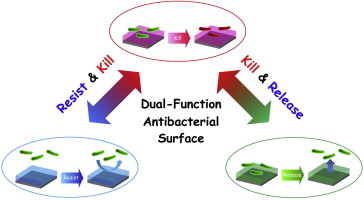Hong Chen
College of Chemistry, Chemical Engineering and Materials Science, Soochow University, 199# Ren'ai Road, Suzhou 215123, China
Acta Biomater. 2015, 16, 1–13
Bacterial attachment and the subsequent formation of biofilm on surfaces of synthetic materials pose a serious problem in both human healthcare and industrial applications. In recent decades, considerable attention has been paid to developing antibacterial surfaces to reduce the extent of initial bacterial attachment and thereby to prevent subsequent biofilm formation. Briefly, there are three main types of antibacterial surfaces: bactericidal surfaces, bacteria-resistant surfaces, and bacteria-release surfaces. The strategy adopted to develop each type of surface has inherent advantages and disadvantages; many efforts have been focused on the development of novel antibacterial surfaces with dual functionality. In this review, we highlight the recent progress made in the development of dual-function antibacterial surfaces for biomedical applications. These surfaces are based on the combination of two strategies into one system, which can kill attached bacteria as well as resisting or releasing bacteria. Perspectives on future research directions for the design of dual-function antibacterial surfaces are also provided.

链接:
//www.sciencedirect.com/science/article/pii/S1742706115000288